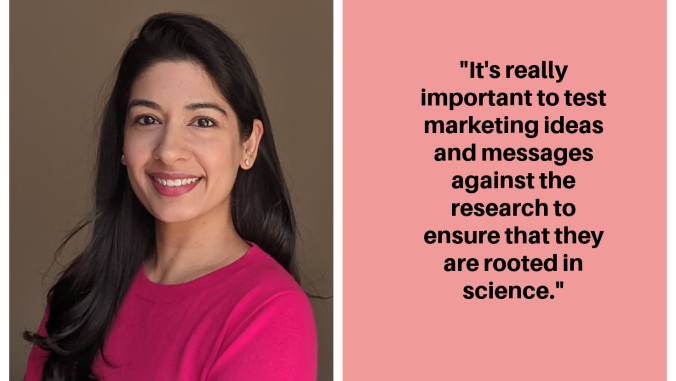Partnerships are essential to solving complex societal problems — so much so that the United Nations made this a Sustainable Development Goal. SDG 17, "Partnerships for the Goals," calls for strengthening the means of implementation and revitalizing the global partnership for sustainable development. Among SDG 17’s 19 targets, which aim to promote mobilization of resources, knowledge transfer, capacity-building and the creation of environmentally sound technologies, is Target 17.H: "Encourage Effective Partnerships."
To find such a simple target so far down the rabbit hole of SDGs — an interlinked framework with 169 targets and 232 measurable indicators to achieve the United Nations 2030 Agenda for a sustainable future — is a reminder that within each macro problem is a series of micro solutions waiting to be uncovered. Going back to the maxim "Think globally, act locally," every person who creates effective partnerships plays a role in the global cooperation needed to address intractable problems from malnutrition to the climate crisis.
If more cooperation improves lives around the world, then creating effective partnerships is the skill we need to achieve it. That’s why it is a key lesson in the bestseller "Turnaround: How to Change Course When Things are Going South" by Lisa Gable. The former U.S. ambassador understands what it takes to forge agreements among powerful entities. Not only did she do so as a presidential appointee under George W. Bush, but also as the facilitator of innovative self-regulatory solutions such as the reduction of 6.4 trillion calories in food sold in the U.S., when she convened food and beverage industry leaders to agree on a standard metric by which to measure progress in mitigating the nation’s obesity epidemic.
Whether you’re a power broker in policy or international business or a changemaker striving to create a more positive impact in your community, Gable’s advice on creating effective partnerships can help you grow your capacity and influence exponentially. Here’s an excerpt from our conversation:
Anna Clark: Lisa, thanks for sharing your insights from your book. Starting with the basics, what makes for an effective partnership?
Lisa Gable: At a fundamental level, an effective partnership is one in which your partners are willing to align their objectives with yours to achieve an agreed-upon outcome.
Clark: That’s great in theory, but the preponderance of lawsuits among former business partners shows that many partnerships fail despite good intentions. What’s the starting point for creating a partnership that can go the distance?
Gable: An effective partnership begins with clarity on what you need from the relationship and finding a partner who can fulfill that need in a mutually beneficial way.
A good partner can help you move more quickly by providing a capability you need but is too expensive to develop or acquire on your own, helping you reach a market, a customer base or a set of constituents that you don’t currently have access to and being better at executing in one of the areas that are not a core competency of yours. The right partnership also can help you reduce expenses and build credibility with new audiences.
Whatever the aim, success depends on a range of factors, not the least of which include the integrity and capabilities of each partner and having realistic expectations and trust in the relationship.
Clark: I appreciate the details you share in your book about the behavioral aspects of forming effective partnerships. Can you speak to some of the ways that effective partnerships can create positive social impact?
Gable: I’ve used different forms of partnerships on many projects that have yielded societal benefits. For example, when I served on the board of Girl Scouts of the USA, I was part of the team that worked on a partnership with Nestlé to co-brand Girl Scout cookies with its coffee creamers and chocolate bars. The Girl Scouts received a revenue stream from the sale of those products, and Nestlé benefited from being associated with a renowned charity and its mission to empower girls.
Those who represent causes that align with nonprofits also can partner with them to distribute goods or content within their channels, thus increasing their distribution capacity. For example, my team and I partnered with the Girl Scouts, the National Association of School Nurses and the Academy of Nutrition and Dietetics to distribute health and wellness curricula and food allergy awareness content.
Large companies often use public-private partnerships to practice business diplomacy and facilitate economic growth in relevant communities. A former PepsiCo executive created a trilateral collaboration involving the United States Agency for International Development, the United Nations World Food Program, and PepsiCo to build long-term stability for chickpea farmers in Ethiopia by helping them increase their crop output and source their product to PepsiCo’s supply chain.
Finally, we have corporate social responsibility partnerships in which companies align with nonprofits to achieve CSR goals, such as a brand campaign for Coke in which Coca-Cola partnered with the World Wildlife Fund to protect polar bears in the Arctic Circle.
Clark: Some people might label some of these actions as greenwashing, but a number of the examples you share in your book have created enduring social impact. For example, it’s fascinating that the very first public-private partnership you set up for Intel nearly 40 years ago still contributes to the New Mexico community. What can we learn from that example?
Gable: It’s a lot to unpack but the gist is that in the early ‘90s, when Silicon Valley was rising to prominence, Intel’s COO Craig Barrett wanted the company to address the lack of tech talent by addressing the root problem in K-12 education. This was before CSR was a focus at Intel and before the Intel Foundation was fully formed. Local volunteerism and giving were well-meaning yet unsophisticated approaches, with no vision for how employees’ decentralized efforts could move the needle for improving education.
By contrast, the future we visualized was one in which Intel took a seat at the education reform table by creating a model for how tech companies could advance K-12 STEM education. This became my job to manage, and convincing all those site managers to join us in this journey — essentially using shuttle diplomacy to talk them out of the money they were using to fund their local pet projects — was no easy task.
We ultimately created three programs. The first involved Peter Senge and a team of consultants who had been working with MIT to evaluate how people thought and learned differently, which until that time, no one had fully explored within the context of enabling technologies. And so, with the Noyce Foundation, Intel went into a K-12 school in the poorest area of southern New Mexico. Our consultants applied what they learned from evaluating different learning styles and redesigned classrooms to accommodate them. Then we brought in our manufacturing gurus, who looked at both behavioral and learning styles, followed by our training teams, who identified existing technologies in which we were investing to support internal employee education and identified ways to leverage those investments to benefit local schools.
In the simplest form, we created a concept for a future classroom, and through effective partnerships, replicated that concept across New Mexico and Arizona. From there, we partnered with Albuquerque Public Schools. We offered them the opportunity to piggyback on Intel’s computer-based training (CBT) and satellite-based training capabilities, essentially technology we were already buying. That enabled the Albuquerque school system to increase capacity for technology to improve the training that was accessible to the kids both through satellite and CBT, made available in conjunction with the National Labs and Hughes Communication.
Clark: So, the takeaway is that by leveraging existing expenditures, Intel was able to boost the capacity of the school.
Gable: Exactly. We looked at what we were already spending on techniques and technology to improve internal employee training and then said, “What if we let them borrow it? What if we let them ‘camp out’ on our technology and assets?” It’s incredible to look at Intel in New Mexico and Arizona today and see the good that grew from that contagion of integrated partnerships, which still endures for Intel and the community.






